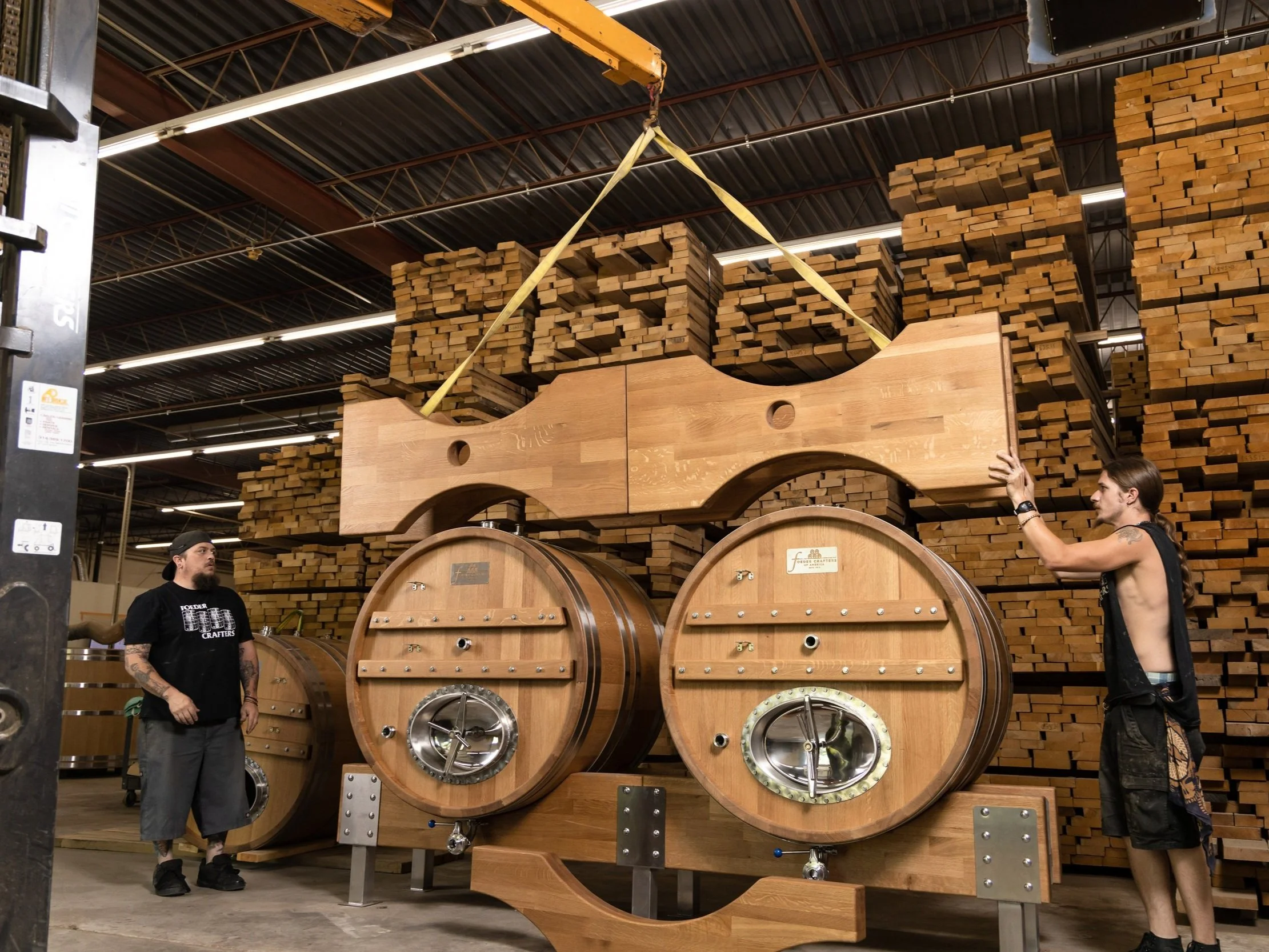
How It’s Made
We’re very proud of the thought and care we put into every foeder we build. Here is a short glimpse into how we do it.
Slow growth, sustainable forestry
Missouri is blessed with more white oaks (quercus alba) than any other state. Our climate and soil composition makes for trees that grow slowly and have perfect grain structure. There are over 15 million acres of hardwood forest in Missouri and the annual growth far exceeds the amount harvested, ensuring sustainability for future generations.
Log selection
After harvest, our sawmill sets aside its best logs specifically for Foeder Crafters - only about 3% make the cut. The logs are then sawed to our specifications and are set out to dry in the open air for at least two years. The harsh environment breaks down a lot of the tannins in the wood and mellows it in a way that a kiln cannot.
Assembly
After every board is tested and tasted, the staves are pieced together. As shown above, our staves are finger-jointed on the side, which sets our foeders apart from the competition. These joints lock the staves into place (especially after hydration) and make the tank extremely stable and solid, but more importantly, air-tight.
Hydration and testing
After the bands are welded into place, each foeder is steamed for at least 12 hours. This sanitizes and hydrates the wood, while also pulling out a majority of the tannins that are left. The foeders are then filled with water and left to sit for at least 3 days. This slowly completes the hydration and surfaces any issues that need to be fixed so we can deliver a leak-free tank.
Finishing
The last stop in the shop is our finishing department. Each foeder receives a final sanding and a very light topcoat. This gives the wood a beautiful ‘pop’ and also a little bit of protection from inevitable splashes in its final home.
Shipping and Installation
Whenever possible, we use our own driver for shipping and installation. The foeders arrive tarped on a flatbed trailer and are placed into their new home, stands assembled, and accessories installed. White glove treatment - all you provide is a forklift (and maybe an extra set of hands, in some cases).






